Whenever my wife and I go to Sri Lanka - and we have been there many times - we come back laden with tea and spices. We like to buy both straight from the producers - not only do you get things cheaper from them, but you also tend to have more choice and get better quality. As a bonus you are often offered a free personal tour of the premises.
The photo at the top is from a tour of a small cinnamon processing facility in the South-West of Sri Lanka. Cinnamon, as you probably know, is produced from the bark of a small evergreen tree of the laurel family. The bark is stripped and the outer corky layers are scraped off. The process is illustrated in the photo below (from an earlier trip):
What remains are thin, slightly curled hulls. These are then rolled into a (long) cigar shape, known as a 'quill', either singly or with several others packed tightly together. The quills are still moist at this stage and need to be dried, although ideally not in direct sunlight. The next shot (again taken on another trip) shows some of them drying under a palm-leaf roof:
All this is usually done at the various plantations. The dried quills are then sent to a processing facility, such as the one we visited. They deal with the grading, cutting, and shipping of the product.
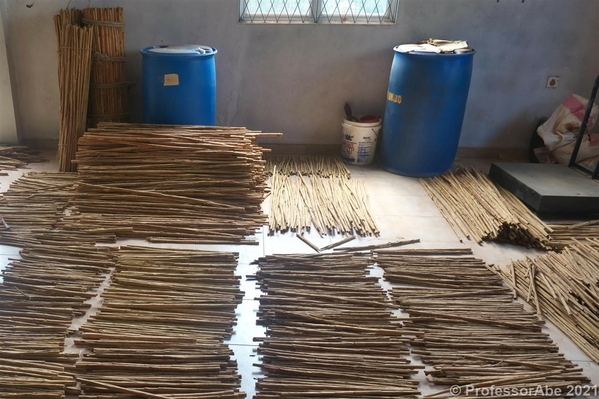
There a number of different standard lengths for cinnamon quills, as illustrated in the following two photos.
The off-cuts created are used for grinding, i.e. for producing cinnamon powder.
The final photo shows the grading system for commercial quills, with quality decreasing from left to right. The top product - and by far the most expensive (although worth every rupee) - is called 'Alba'. They are the smallest in diameter (around 6mm), with no 'foxing' - the occurrence of reddish-brown patches - on the surface. Both the diameter of the quills and the amount of foxing allowed increase down the quality ladder. The letters 'C', 'M', and 'H' by the way stand for 'Continental', 'Mexican', and 'Hamburg', respectively. I presume these terms once referred to the location of the buyers.
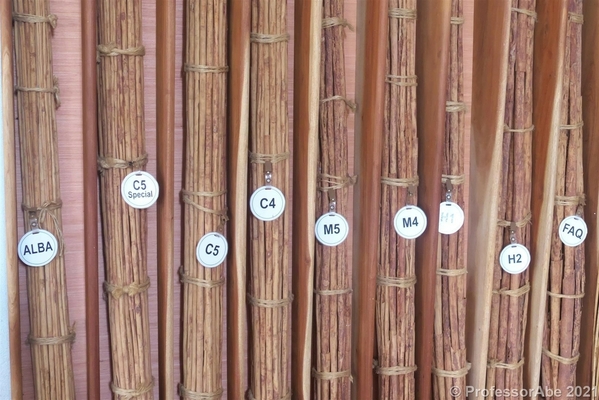
These days Sri Lankan cinnamon, of course, is exported to countries around the world. What is sold in some places as 'cinnamon', however, is not actually the real thing, but a spice called cassia (a much cheaper product). This would appear to be true of the US, for instance:
https://www.thespruceeats.com/what-is-cinnamon-765161
Cassia is also produced from bark, but comes from a different (although related) variety of tree which is native to China. Its quills are much thicker and harder than those of the true cinnamon, it has a darker colour and - despite certain similarities - a rather different taste profile. As far as I am concerned, there is absolutely no contest: we use a fair amount of cinnamon, but I have never found a good use for cassia. However, I am not expecting everyone to share my preference.

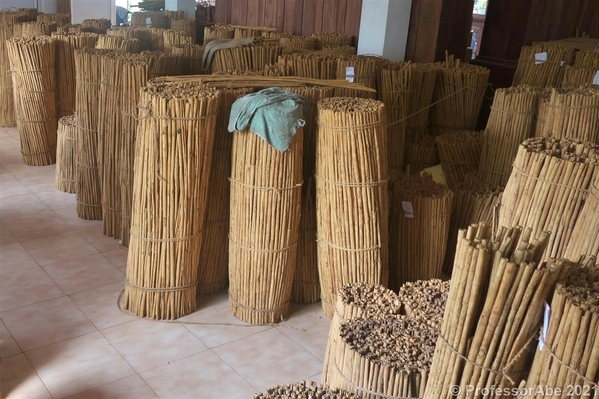
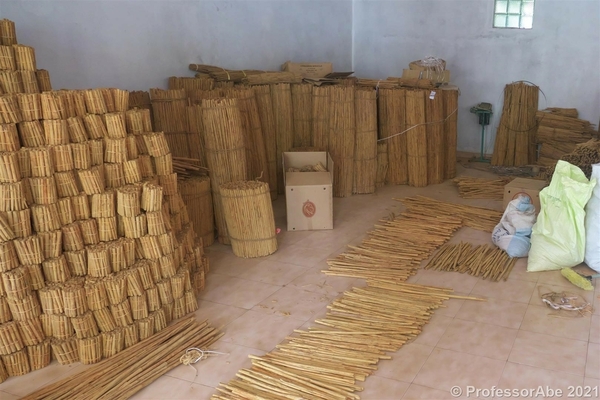
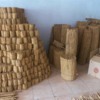




Comments (0)